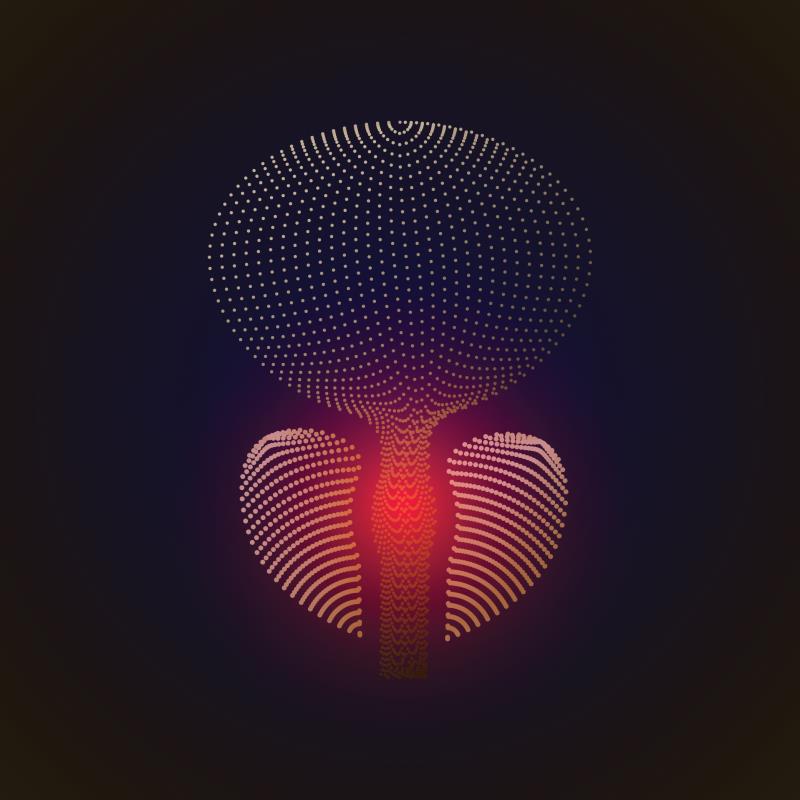A moderately hypofractionated radiotherapy (RT) dose schedule was noninferior to conventional RT, according to the 8-year outcomes from the CHHiP* trial presented at ASCO GU 2020.
“[The] 5-year results indicated that moderate hypofractionation of 60 Gray(Gy)/20 fractions(f) was noninferior to 74Gy/37f … [and] is now an international standard of care,” said the researchers. “[However,] with patients remaining at risk of recurrence for many years, information on long-term outcomes is important.”
The study involved 3,216 men (median age, 69 years) with node-negative T1b–T3a localized prostate cancer with risk of seminal vesical involvement ≤30 percent. Participants were randomized 1:1:1 to receive RT at a dose schedule of 74Gy/37f (control), 60Gy/20f, or 57Gy/19f. [ASCO GU 2020, abstract 325]
After a median follow up of 9.3 years, 8-year event**-free rates were 80.6, 83.7, and 78.5 percent for 74, 60, and 57Gy, respectively. Noninferiority was confirmed for 60Gy (adjusted hazard ratio [HR60Gy], 0.85, 90 percent confidence interval, 0.72–1.01; p=0.11).
“As these findings show a similar pattern to the 5-year outcomes, this means we can confirm that 60Gy is noninferior to 74Gy with a critical HR of 1.2,” said Professor David Dearnaley from the Institute of Cancer Research and The Royal Marsden NHS Foundation Trust in London, UK.
Elderly subgroup
In an unplanned analysis comparing participants by age, those who were <75 years had event-free rates that mirrored those of the overall cohort (81.2, 83.2, and 78.0 percent for 74, 60, and 57Gy, respectively).
In the >75-year cohort, the highest event-free rate was with 60Gy (86.7 percent). Nonetheless, it is important to note that 57Gy did better than 74Gy (81.6 percent vs 77.1 percent; HR57Gy, 0.77; p=0.31). “[However, as this] is an unplanned analysis, one has to be careful … [Nonetheless, this might] be of potential interest because they’re important to clinical practice,” pointed out Dearnaley.
Other endpoints, toxicity
Nearly all patients achieved metastases-free rates at 8 years (95.6, 95.3, and 94.8 percent for 74, 60, and 57Gy, respectively). In terms of overall survival, about 87 percent of participants across all cohorts were surviving at 8 years.
Clinician-assessed RTOG*** grade ≥2 bowel and bladder toxicity rates were similarly low across all arms at 5 years (1.6, 2.0, and 1.9 percent in the 74, 60, and 57Gy arms, respectively [bowel] and 1.9, 1.5, and 1.9 percent, respectively [bladder]).
In terms of patient-reported toxicity evaluating ‘moderate or large’ bother, the 60Gy bother scores are a bit higher than the 57Gy bother scores, both for bowel (7.6 percent vs 5.3 percent) and bladder (9.3 percent vs 7.9 percent). Moreover, the bother is greater among the elderly than the younger men which, according to Dearnaley, is “not all that surprising”.
Taken together, the current findings support the continued use of 60Gy/20f as standard of care for men with localized prostate cancer, concluded Dearnaley. Nonetheless, the 57Gy/19f dose schedule continues to be an option in this setting particularly among men ≥75 years, he added.
*CHHiP: Conventional or Hypofractionated High-dose intensity modulated radiotherapy in Prostate cancer
**biochemical failure/prostate cancer recurrence
***RTOG: Radiation Therapy Oncology Group
